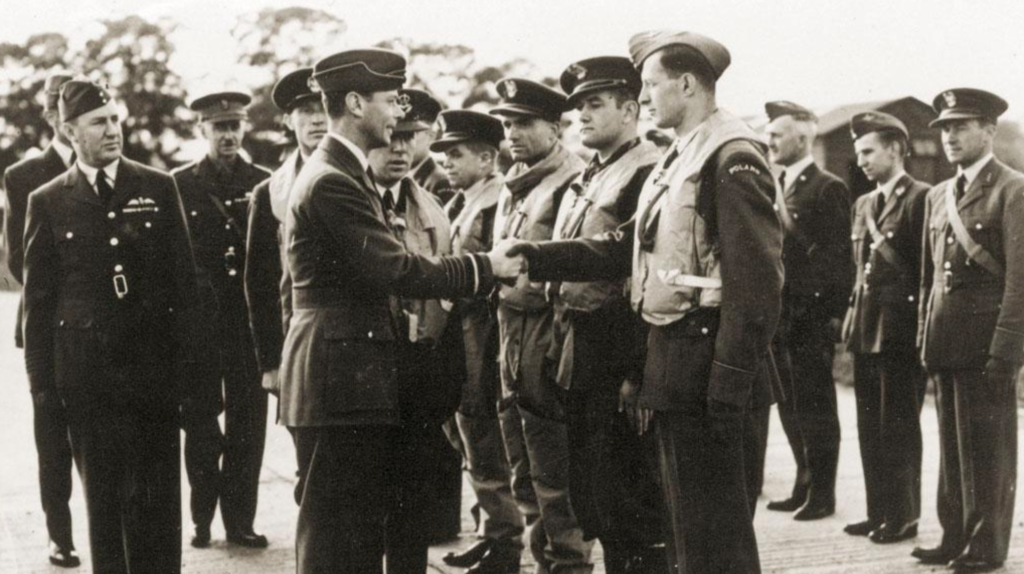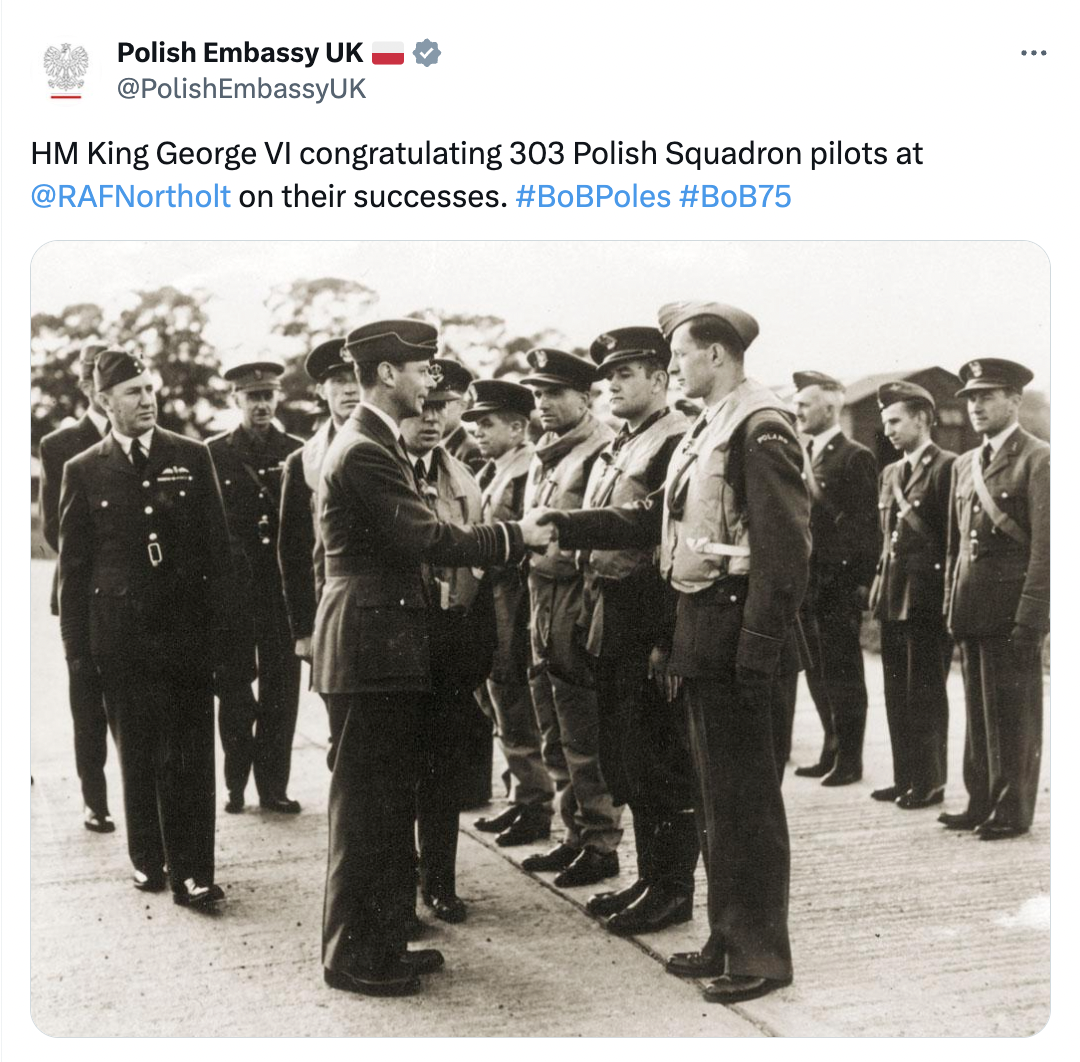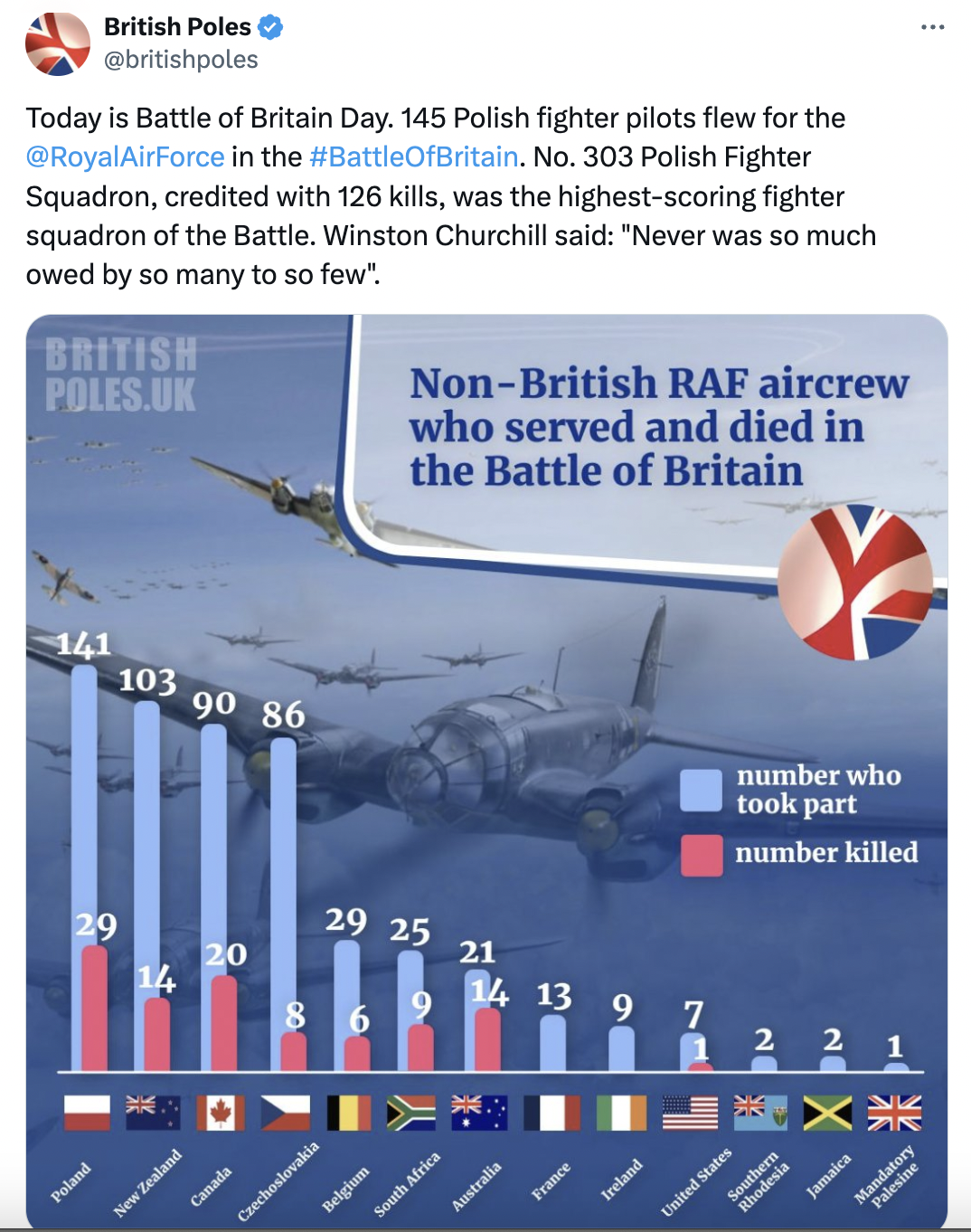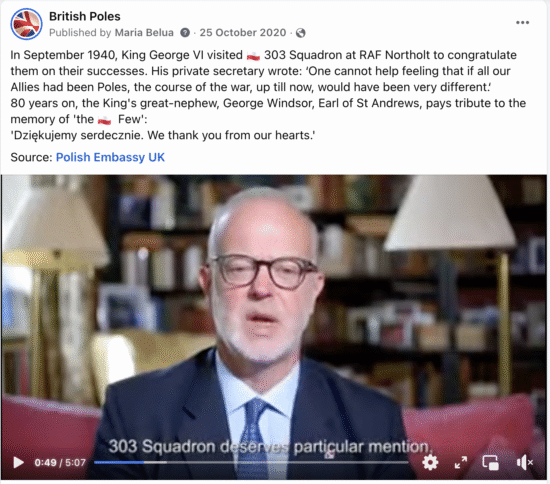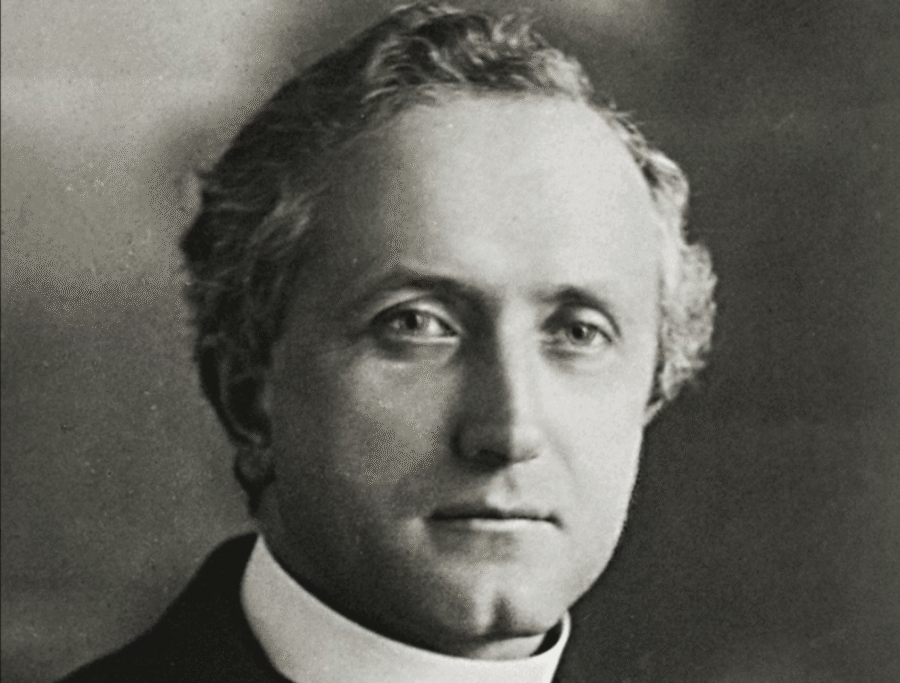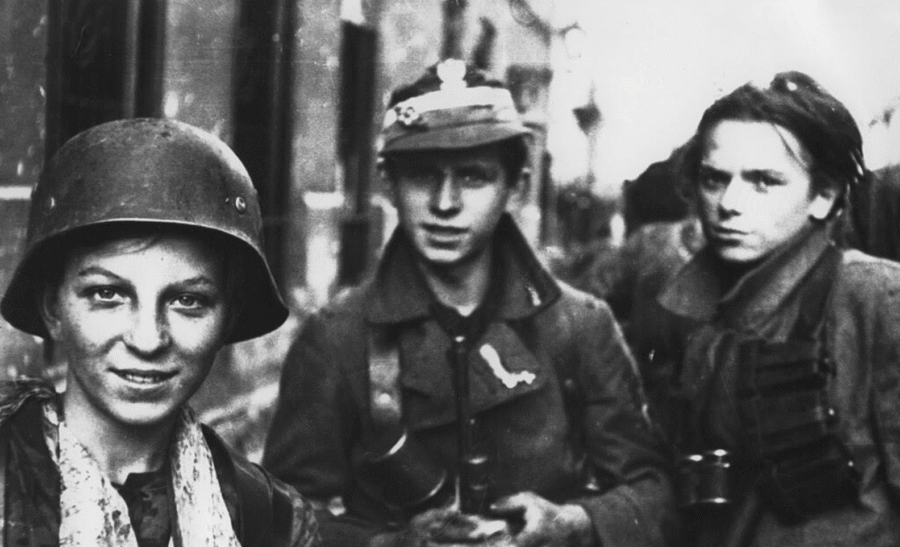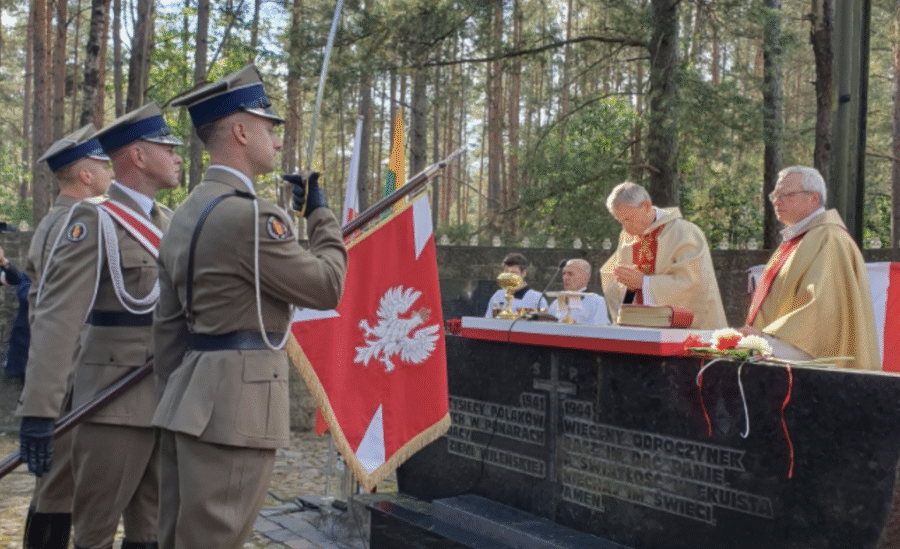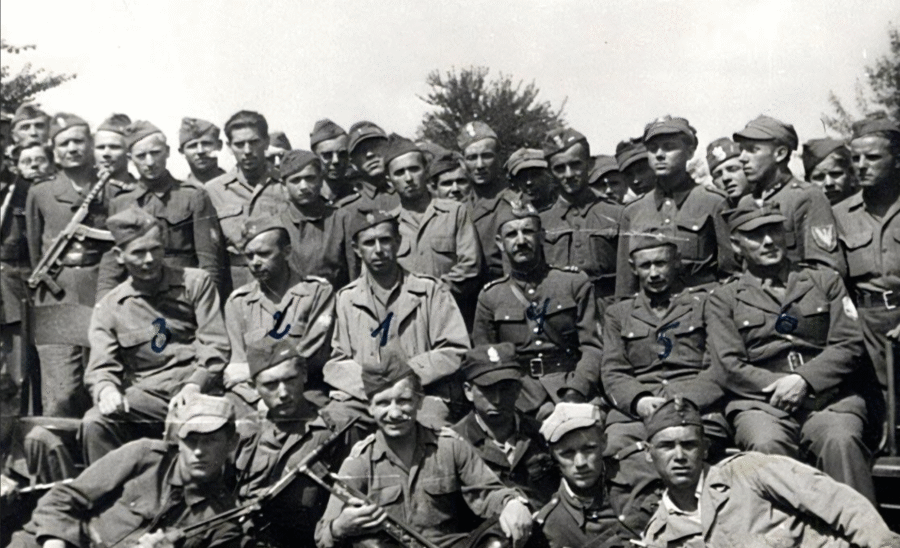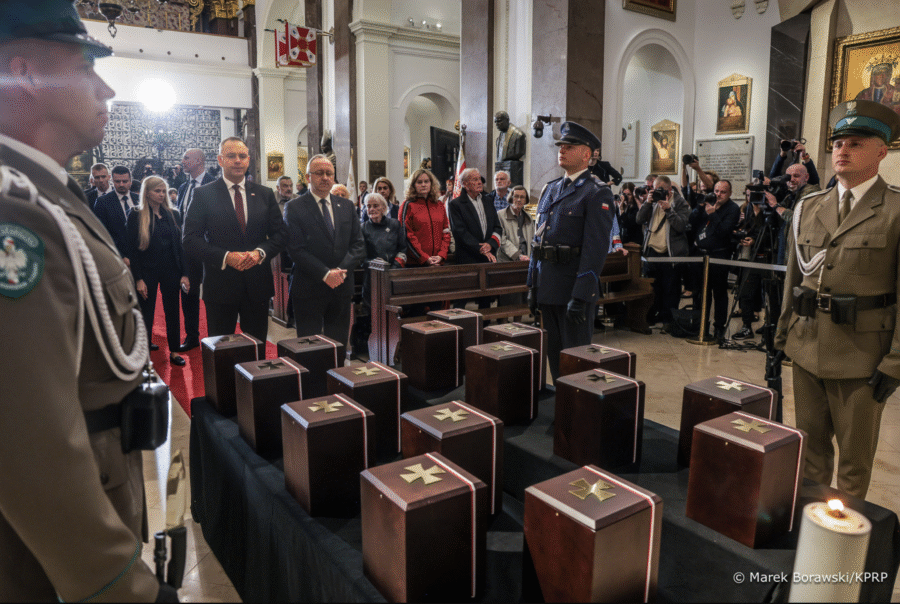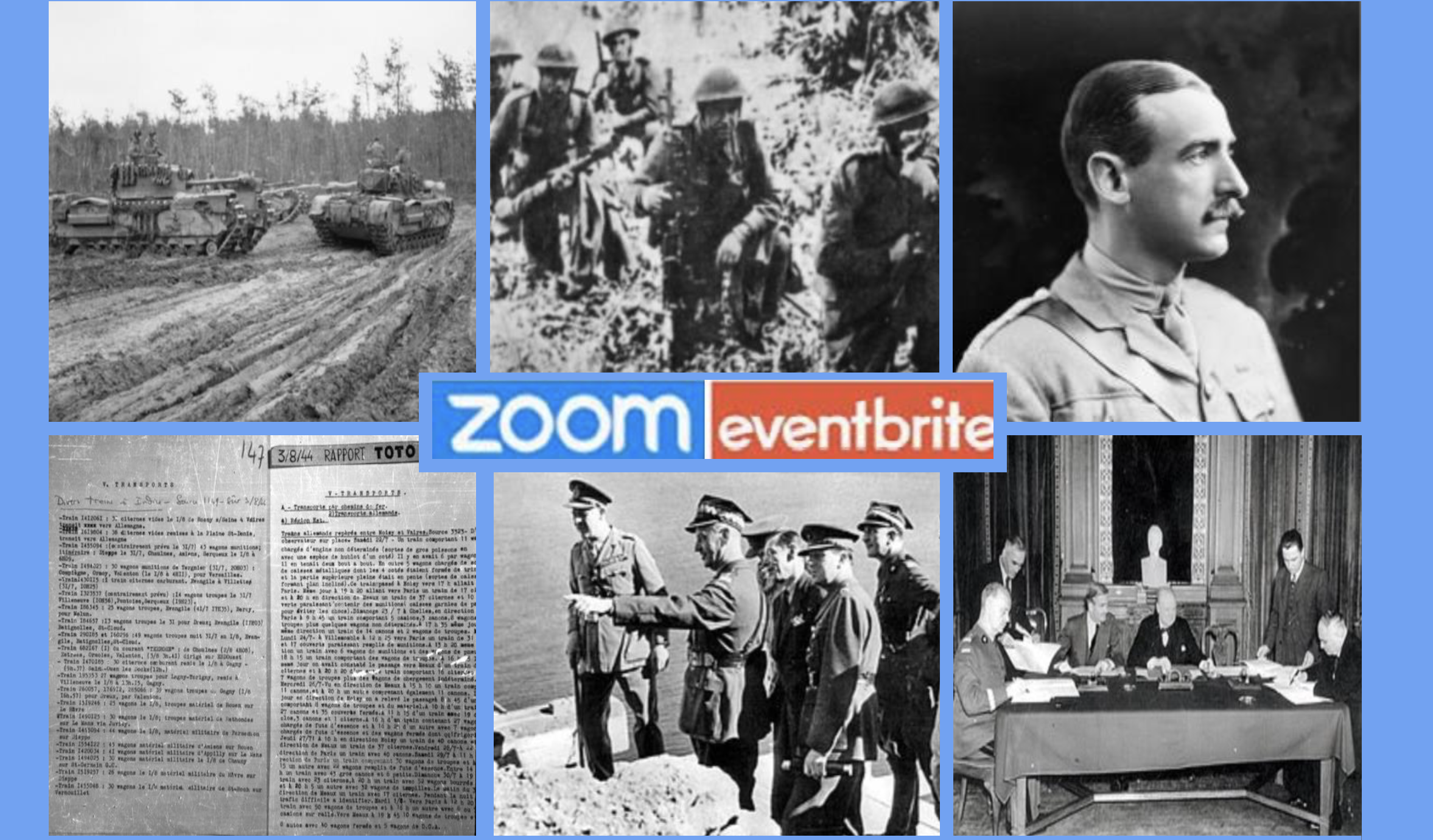RAF 303 (Polish) Squadron was one of 16 Polish squadrons in the Royal Air Force during World War Two. Their gallantry, personal charm and life stories made the Poles the darlings of the press. Reporters who got to know them personally and learned of their highly effective fighting style covered the English newspapers with reports from the heroic Poles.
One of the Polish airmen, Jan Kowalski later recalled the visit:
”We lined up in front of dispersal and, when the King arrived, our CO, Squadron Leader Kellet introduced us individually. The King shook hands with those present.”
The King’s visit and the popularity of the Polish airmen were described in the book „For Your Freedom and Ours. The Kosciuszko Squadron: Forgotten Heroes of World War II” by Lynne Olson and Stanley Cloud:
“The English girls loved the Poles, the newspapers raved about their exploits, and King George VI visited them at their Northolt base and signed his name in the squadron diary. The Polish pilots – who had been groomed in the old school style by their officer corps back home – were very much a hit with the ladies, with their fearless spirit and hand-kissing gallantry. Such was their appeal to the natives that even British airmen pretended to be Poles in order to chat up the girls. As one hoity-toity head mistress admonished in a speech to partying pupils: „And remember, keep away from gin and Polish airmen!„
Shortly after the visit the Polish Airmen took off to engage in battle during which 13 confirmed victims.
The 303rd Squadron or the RAF 303rd Polish Fighter Squadron, was officially established on August 2, 1940. The new squadron continued the glorious pre-war traditions with its roots in the famous 7th Kosciuszko Squadron, where American pilots fought during the Polish-Soviet War.
In the following years, the Poles guarded the British skies and then went into battle over occupied France. They covered bombing expeditions, attacked ground targets and conducted hunts for Luftwaffe aircraft.
At 4.45 am on 6 June 1944, the pilots of 303 Squadron took off to cover the Allied landings in Normandy. The aircraft provided cover for convoys and bombers and attacked ground targets. On 12 September, the Squadron took part in Operation Market, covering the landing of Allied parachute troops in the Netherlands.
On 27 November 1946, 303 Squadron officially ceased to exist. Some of the pilots chose to remain in the west, while others returned to communist-ruled Poland. Those who remained in the West quickly stabilised their personal and professional life. Those returning to Poland became ‘enemies of the people’ in the new communist regime. One of the most famous fighter pilots, Stanisław Skalski, was arrested on bogus charges of espionage and sentenced to death but was finally released after the end of the Stalinist era and the rise of Władysław Gomułka.
Source: IPN, British Poles
Tomasz Modrzejewski


